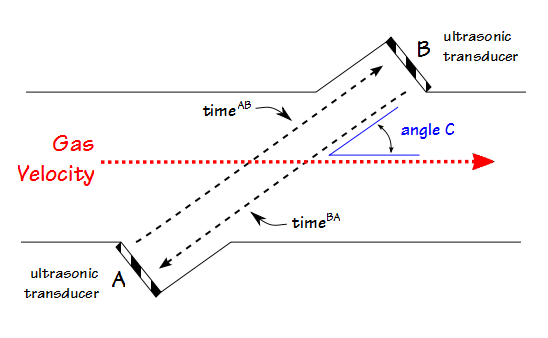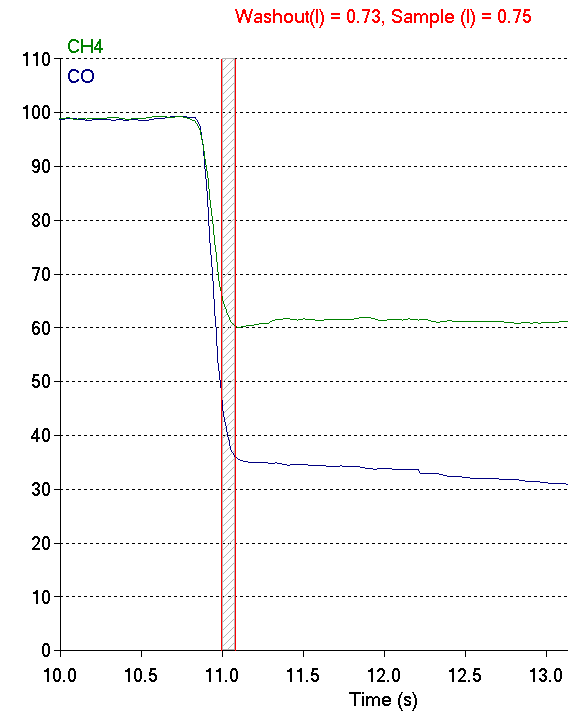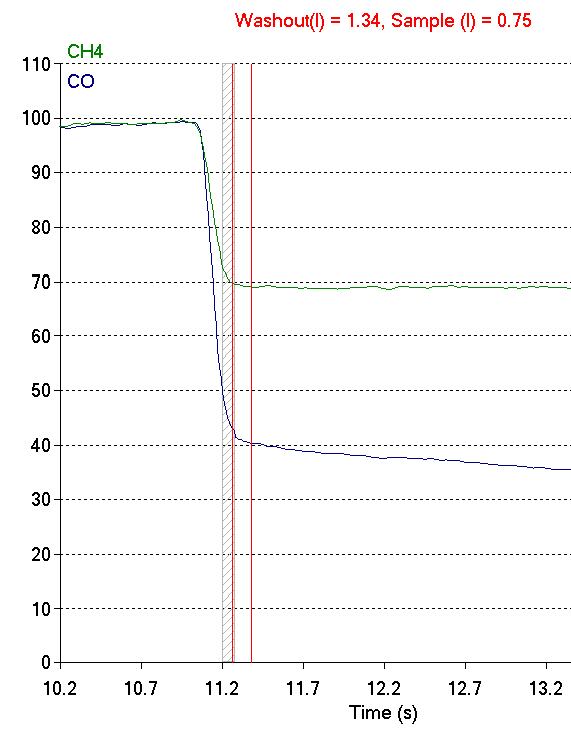There are at least a half dozen companies that use an ultrasonic flowmeter in their spirometer. The first patent for an ultrasonic flowmeter was made in the 1970’s but it wasn’t until the 1990’s that the first ultrasonic spirometers came to market. The basic idea is fairly simple and that is to measure the transit time of ultrasonic pulses through flowing gas. Pulses that travel in the same direction the gas is flowing will take less time to travel a given distance, while pulses traveling against the direction of gas flow take a longer time.
This particular measurement process is called time-of-flight (as opposed to doppler shift) and has a relatively flat flow/signal curve and frequency response. An early design of this kind of flowmeter had the ultrasonic transducers sitting in the flow of gas, but this both impedes the flow of gas and is hard to clean. A transverse design was developed that put the transducers outside the path of gas flow and this configuration has been used in all ultrasonic spirometers.



